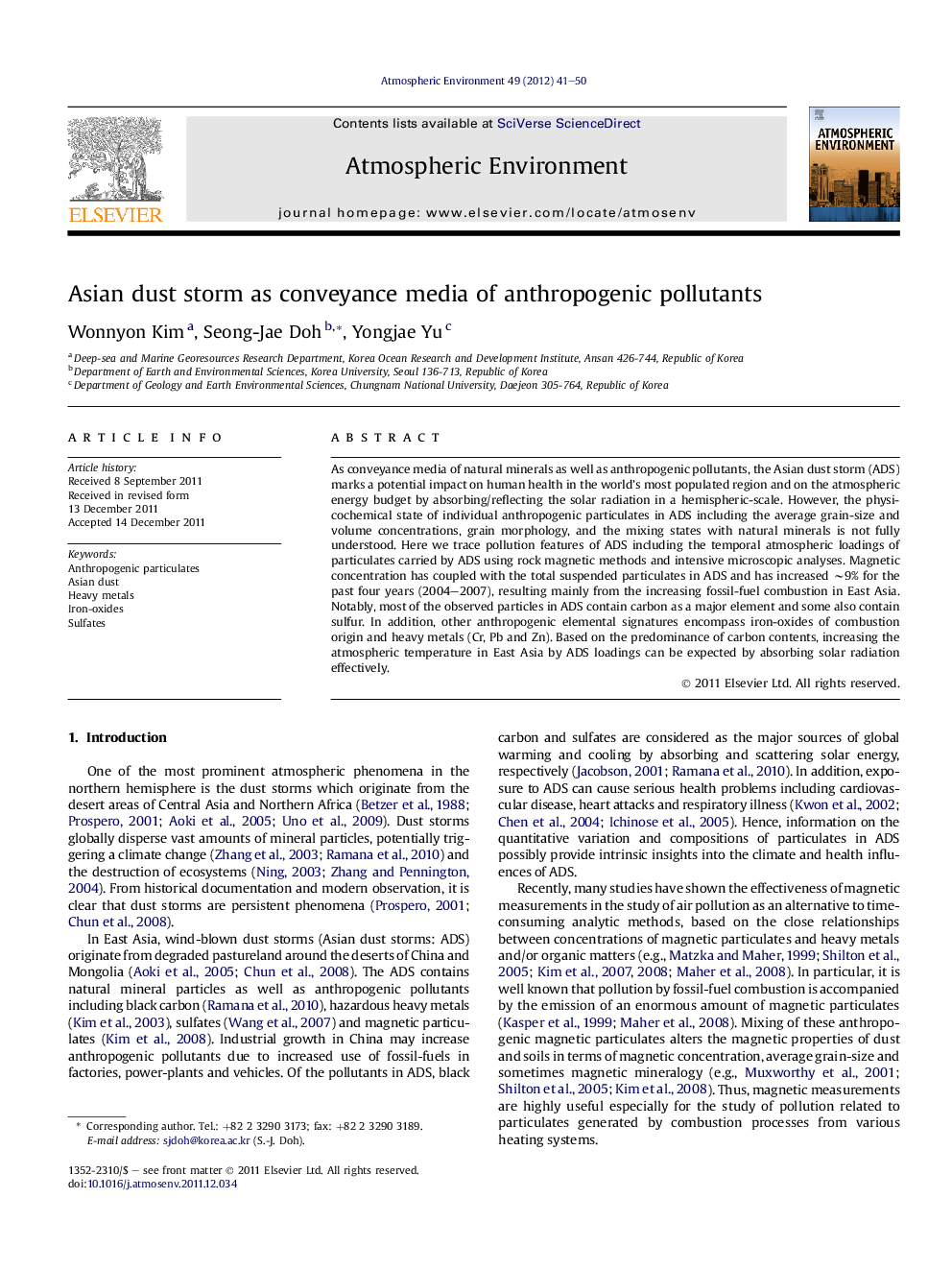| Article ID | Journal | Published Year | Pages | File Type |
|---|---|---|---|---|
| 4439061 | Atmospheric Environment | 2012 | 10 Pages |
As conveyance media of natural minerals as well as anthropogenic pollutants, the Asian dust storm (ADS) marks a potential impact on human health in the world's most populated region and on the atmospheric energy budget by absorbing/reflecting the solar radiation in a hemispheric-scale. However, the physicochemical state of individual anthropogenic particulates in ADS including the average grain-size and volume concentrations, grain morphology, and the mixing states with natural minerals is not fully understood. Here we trace pollution features of ADS including the temporal atmospheric loadings of particulates carried by ADS using rock magnetic methods and intensive microscopic analyses. Magnetic concentration has coupled with the total suspended particulates in ADS and has increased ∼9% for the past four years (2004–2007), resulting mainly from the increasing fossil-fuel combustion in East Asia. Notably, most of the observed particles in ADS contain carbon as a major element and some also contain sulfur. In addition, other anthropogenic elemental signatures encompass iron-oxides of combustion origin and heavy metals (Cr, Pb and Zn). Based on the predominance of carbon contents, increasing the atmospheric temperature in East Asia by ADS loadings can be expected by absorbing solar radiation effectively.
► Magnetic measurements identified annually increasing flux of particulates in ADS. ► We also presented detailed chemical compositions of individual particulates. ► Most of the particulates were from fossil-fuel combustions. ► Significant carbon concentration possibly increases the energy budget of the Earth.
